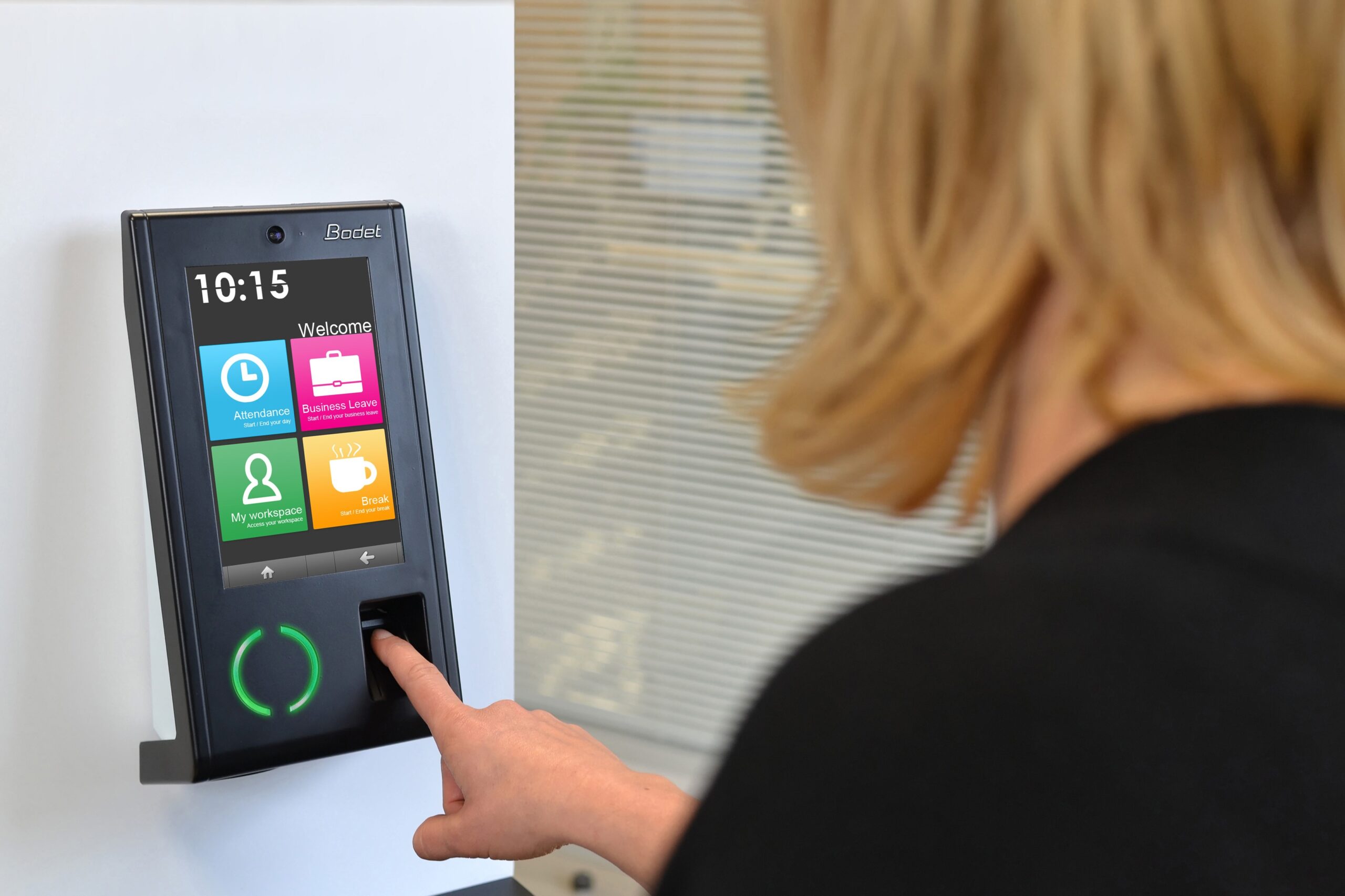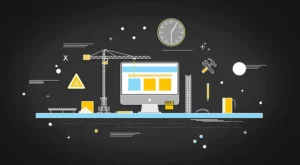
and attendance systems can benefit your business in numerous ways. However, with so many choices, deciding which one will fit your needs can take time. If you are looking for a time and attendance system, here’s everything you need to know about what they are, what they offer, and how to choose one.
What are time and attendance systems?
Time and attendance systems allow employees to clock in and out electronically via time clocks, internet-connected computers, mobile devices, and telephones. Some solutions also offer the ability to punch in and out via text messages, social media programs like Twitter, and other communication programs like Slack. When employee clocks in or out, the data instantly transfers to software that can seamlessly import it to your payroll solution.
These systems do more than track when employees come and go. They also monitor mobile employees via geolocation and geofencing, manage paid time off (PTO), create employee schedules, provide detailed labor reports, and give real-time data on who is working, who is not, who showed up late, and who is nearing overtime.
Time and attendance systems offer self-service that allows employees to handle many time-tracking tasks independently, such as reviewing the hours they’ve worked, their current and future schedules, and their PTO accruals.
Many of these systems offer both cloud-based and on-premises solutions. The on-premises systems are stored on servers within your business, while the cloud-based systems are housed by your time and attendance system provider and accessed online.
Types
Given their breadth of functions, it should come as no surprise that there are various types of time and attendance systems. When comparing your options, you’ll probably encounter the following types of systems:
- Timecard: The timecard option is the classic mechanical punch clock gone digital. When installing a timecard system, you’ll give your employees a timecard that resembles a credit card. These cards automate time tracking, but just as with physical timesheets, there’s nothing stopping employees from swiping each other’s cards to cover for absent or tardy co-workers.
- Proximity cards, badges, and key fobs: Instead of making you swipe a card, these time and attendance tracking options rely on readers that scan identifying cards, badges, or critical fobs within a certain distance. Many of these time and attendance tracking options aren’t just for clocking in and out – they can also track your employees’ movements within your workplace.
- Biometric: With biometric time and attendance systems, you’ll know precisely who’s swiping in and out of your office. These high-tech time and attendance tracking systems use facial recognition, fingerprints, eye scanning, and other biological identifiers unique to one person to ensure that the person clocking in is the person working. Of course, you’ll pay more for these high-end features, but with your extra spending comes nearly specific time and attendance tracking.
- Web-based login: If your employees work remotely, you’re probably wondering how any of the above solutions could work for your company. That’s why web-based login stations exist. You can implement these systems so that your employees can sign in from their laptops, personal computers or mobile devices no matter where they are. Our review of QuickBooks Time outlines why this time and attendance system is excellent for mobile workforces.
- Interactive voice response: Another solution for remote employees, an interactive voice response (IVR) tool, is a system through which remote or field employees clock in via phone.
Pros and cons
Pros of time and attendance systems
These are some of the benefits of time and attendance systems:
- No manual timecards. The most significant advantage of digital time and attendance tracking systems is that they eliminate the need for manual timecards. All the time is collected electronically, with the calculations made for you.
- Less human error. Since time and attendance software systems are automated, they reduce the chance of human errors in labor and job costing estimates. They also free up the person responsible for your time and attendance tracking before working on other tasks. Additionally, a lower risk of noncompliance with labor laws and regulations comes with fewer errors.
- More efficient time tracking. Another positive is that these systems manage all your time needs – employee attendance, PTO, and employee scheduling – in one program. This can be both cost-effective and boost productivity, as employees won’t waste time toggling between different programs to ask for time off or look at their schedules.
- More accurate payroll processing. With time and attendance software, you don’t have to round the hours your employees worked to more convenient numbers that work better with your payroll calculations and pay rules. Your software of choice will automate – and ensure the accuracy of – all your payments.
- Extensive integration. Most time and attendance tracking software platforms integrate with many other human resources tools, improving all your workforce management tasks, not just your attendance-related processes.
Cons of time and attendance systems
These are the main pitfalls of time and attendance systems:
- Cost. The biggest drawback of time-tracking systems is that they are more expensive than the manual method, where employees write down their daily hours or punch in and out on a paper timecard.
- Errors. Even the best software programs may occasionally glitch. There’s always a mild risk of tracking or calculation errors when you use any software – time and attendance systems included.
Costs
The cost structure of the Time and Attendance Management System depends on whether you choose a cloud-based or on-premises solution. Cloud-based systems have smaller recurring monthly costs, while on-premises systems typically have more extensive one-time fees.
With on-premises systems, you pay all your costs upfront. You can expect to pay several hundred to several thousand dollars for the software, licenses for each employee, and installation. There are no monthly fees for the service after that. However, the one-time costs don’t typically cover ongoing support or software updates.
For a cloud-based system, most services charge a per-employee fee that ranges from $1 to $10 per month. Some cloud services also charge a base or minimum monthly payment.
Some providers charge a one-time setup and implementation fee. Unlike on-premises systems, however, all software upgrades and support are included in your monthly expenses.
Another cost you might incur for either option is a time clock. Many time and attendance systems work with a range of time clocks. These time clocks can work with PINs, swipe or proximity badges, or biometrics such as fingerprint or facial scans. Again, the complexity of the watch you select will determine the cost. Prices usually range from a couple of hundred dollars for a primary clock to several thousand for a sophisticated biometric clock.






